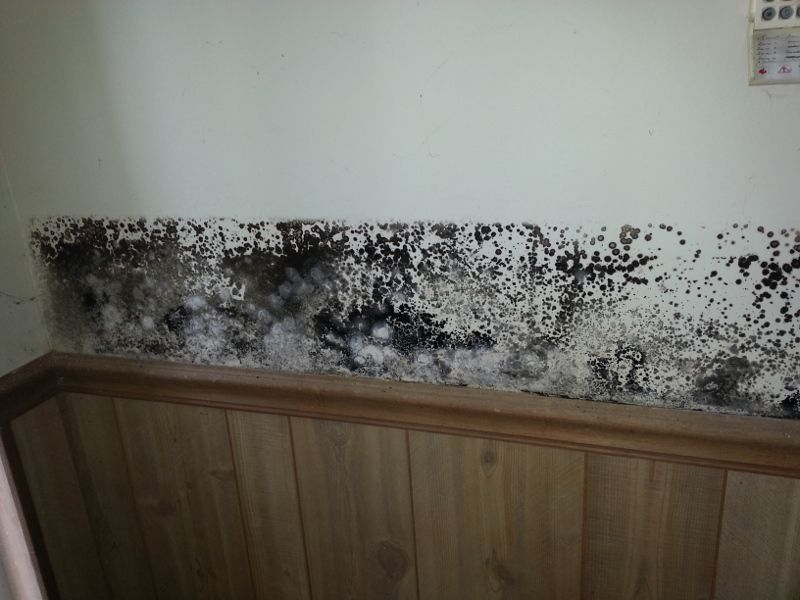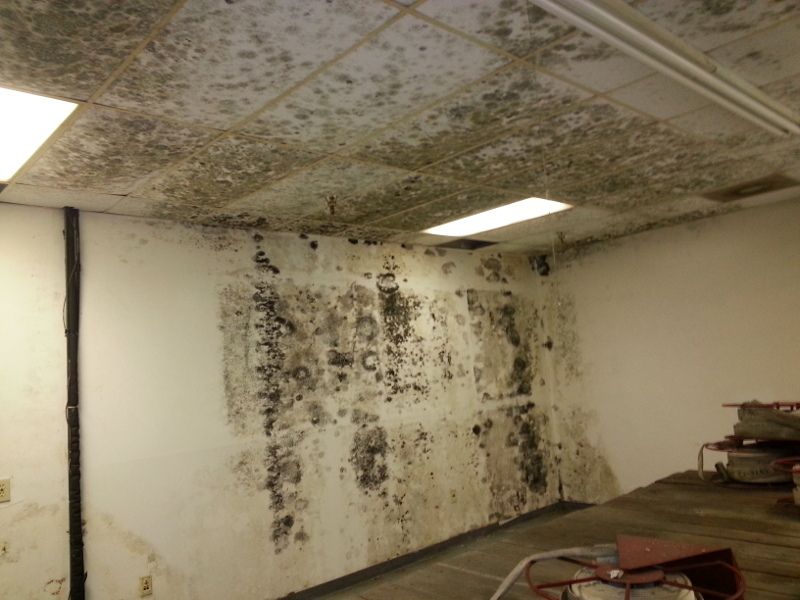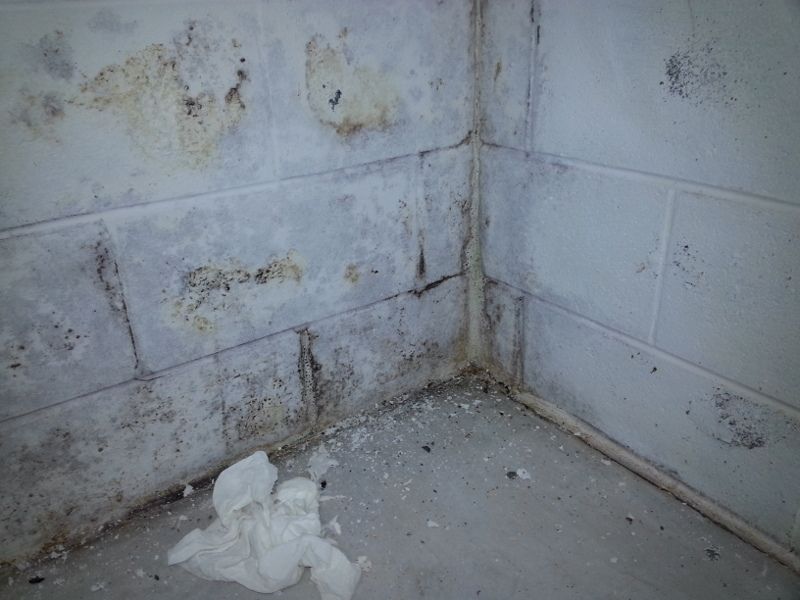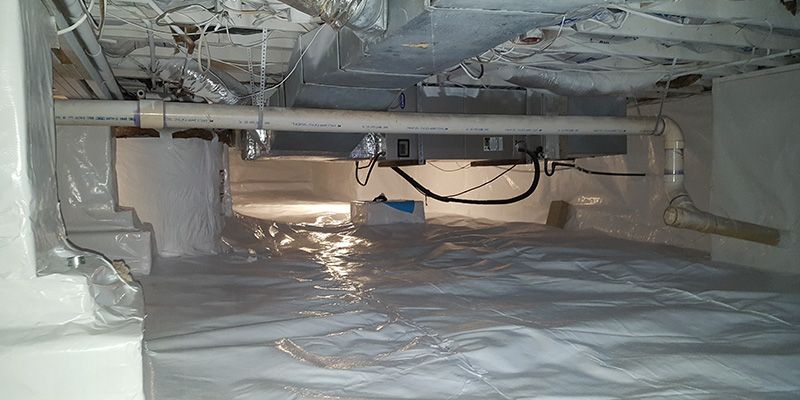In this guide, we’ll detail how you can remove black mold from your home safely and effectively.
How to Remove Black Mold From Your Abingdon Home

Southwest Virginia is well-known for its humid climate with hot, sticky summers and damp winters. Unfortunately, this moisture in the air makes homes in Abingdon, VA or other parts of the state prone to developing mold, specifically in basements and crawlspaces. Mold is also common in moist areas of the home’s interior like bathrooms and kitchens, regardless of climate.
In addition to being unsightly, mold can pose health and safety risks, so it should be removed quickly and correctly. In this guide, we’ll detail how you can remove black mold from your home safely and effectively.
What is Black Mold and Why is it Dangerous?
Mold and fungus grow where there’s moisture and a lack of air circulation. In the home, it’s most common in basements, crawlspaces, and attics, as well as poorly-ventilated kitchens and bathrooms. However, mold can grow in any room of the house if the conditions allow it.
Black mold isn’t actually a particular species distinct from other mold. Various types of mold can be black in appearance, but the term “black mold” is most often used to describe a species called Stachybotrys chartarum, which commonly grows on surfaces like fiberboard and drywall.
Mycotoxins — or the poisonous microscopic particles produced by mold — can negatively affect health in various ways. They can cause allergic symptoms like nasal congestion, coughing, sneezing, trouble breathing, itchy eyes and rashes on the skin. The spores from mold can also trigger asthma attacks in sufferers. For those with compromised immune systems, exposure to black mold can even cause mycosis, a type of fungal infection.
In addition to the health risks, mold can signify a moisture problem that can threaten the structural safety of your home. Wallpaper and drywall can rot, and floorboards and even entire walls can collapse if the problem is severe enough and is not addressed. This damage can be costly as well as hazardous to the safety of you and your family.
The risks — whether related to health or the integrity of your home — of mold exposure increase over time. It’s important to remove black mold, or any other type of mold, from your home as soon as possible.

How to Identify Black Mold
Because black mold isn’t a specific species, its appearance and consistency can vary. It may have some green, black or gray in it, or may even be entirely black. It may be slimy to the touch, or feel mostly dry. You’ll probably notice that it looks distinctly darker than the greenish-gray mold that often grows on food and will also be “flatter” and lack the “furry” appearance of this mold.
You’re most likely to find black mold on walls, ceilings, floors and around the edges of windows. Black mold can also grow on damp building materials. One telltale sign of a black mold infestation is an unpleasant, musty odor created by microbes released into the air. In enclosed areas, this odor can be strong.

Breathing in mold spores can be unpleasant at best and dangerous at worst. When examining mold, wear a face covering as well as eye protection. Rubber gloves can also prevent you from spreading the mold around — as long as you dispose of them immediately after dealing with mold and before touching anything else.
Ventilation is also vital to stop you from inhaling mold spores or fumes from any cleaning products you use to eradicate them. Open any windows and doors nearby, or turn on an extractor fan if you have one.
How to Remove Black Mold
Step 1: Assessment
To find out the extent of your black mold problem, start by visually scanning the area in question. If you have mold in one area of your home, you likely have it elsewhere as well, so check damp areas like the basement, bathroom and around windows. Check walls, ceilings, furniture surfaces and any items in those areas. Don’t assume that the mold you see is the only mold in your home! The EPA recommends a professional remediation company address any area larger than 9 square feet.
When assessing your home for mold, you should also try to identify the source and cause of the moisture that’s allowing it to grow. This could be inadequate ventilation, condensation or water intrusion as a result of damaged or faulty seals.
Step 2: Preparation
To tackle the mold problem, you’ll need the necessary supplies. These are likely to include:
A face mask (such as an N95 mask)
Rubber gloves
Safety glasses or other eye protection
A bucket of water
A sponge, cloths, and/or a scrub brush
A spray bottle
Tyvek suit as necessary or appropriate
Cleaning solutions (EPA approved and appropriate for the materials to be cleaned)
It’s also recommended to wear clothes that you can wash at a very high temperature to kill any mold spores that may get onto them during the cleaning process — or clothes which can be discarded.
To prevent spores from cross contamination during the cleaning process, isolate the area to be cleaned by sealing it off using duct tape and plastic sheeting. Harsh cleaning solutions can cause discoloration of certain materials, which is another reason to isolate the area that needs to be cleaned.
If you’re concerned about discoloration of the surface, do a “spot test” with a small amount of cleaning solution in an unnoticeable place.
Step 3: Cleaning
To remove the mold, scrub the mold-infested surfaces with a scrubbing tool (sponge, cloth or brush) and cleaning solution. The tool and solution used will depend on the severity of the mold problem and the surface in question — you need a tool and solution that are abrasive enough to deal with the problem, but not enough to damage the surface. Depending upon the severity of the mold infestation, the material may need to be removed.
For tiles and grout, mix a cup of the bleach into a gallon of water, apply it to the surface, and leave it for 15 minutes or more before removing it with a brush and rinsing the surface.
Porous materials such as wood, drywall, furniture and insulation are difficult to clean effectively. Materials such as clothes, bedding, linens, curtains, etc. should be professionally cleaned, washed in hot water or disposed of.
HVAC system(s) should be professionally cleaned utilizing the standards set by NADCA (National Air Duct Cleaners Association).
Step 4: Disposal
Clean or dispose of any materials that could potentially have become contaminated with spores. As previously mentioned, wash any clothing worn while cleaning in hot water, as well as any fabric cloths that you used. If you used any other tools, clean and disinfect them.
Removed materials can be discarded along with normal trash. However, removed contaminated materials should be sealed in 6ml garbage bags.
Step 5: Prevention
The final step is to make sure that black mold doesn’t return. Complete remediation of all microbial organisms within a building cannot be guaranteed and a “mold free” building cannot be expected. Because of the nature of mold growth, complete remediation is difficult.
However, there are actions you can take to reduce the likelihood of mold returning.
To reduce humidity, consider buying a dehumidifier for the area prone to mold growth, such as basements or crawl spaces. Depending upon the size of the area, a commercial grade dehumidifier may be necessary.
Ensuring adequate ventilation is also vital, whether simply opening windows and doors regularly or installing mechanized systems to circulate the air. Wet fabrics can also increase the level of moisture in the air, so hang and dry wet towels and clothing outdoors if it’s warm enough or use a tumble dryer or laundromat.
If you discover any leaks in your home, fix them as soon as possible. Water intrusion from leaky windows, pipes, roofs or around the foundation into the basement or crawlspace can create breeding grounds for mold.
Unfortunately, the cause of moisture isn’t always obvious. If you’re experiencing mold infestations in your home and can’t determine the source of the problem, consider calling professionals to determine the source of the problem and any potential solutions.

No matter how severe your mold issue, Astrid Environmental Services can assist you. We have provided countless clients in Southwest Virginia with the highest quality mold remediation and removal services. By providing a thorough and in depth inspection, Astrid can determine the source of the problem, assess any damage and develop a plan of action to address the issue.
As part of the process in addressing the mold issue, we will provide recommendations and advise you on the necessary and appropriate steps to mitigate moisture in the future and to prevent re-infestation in your Abingdon home.
For more information on how Astrid Environmental Services can help you solve your mold problem, don’t hesitate to get in touch with us today!
